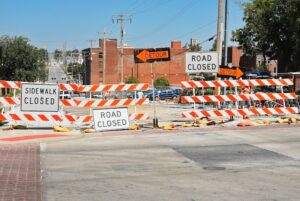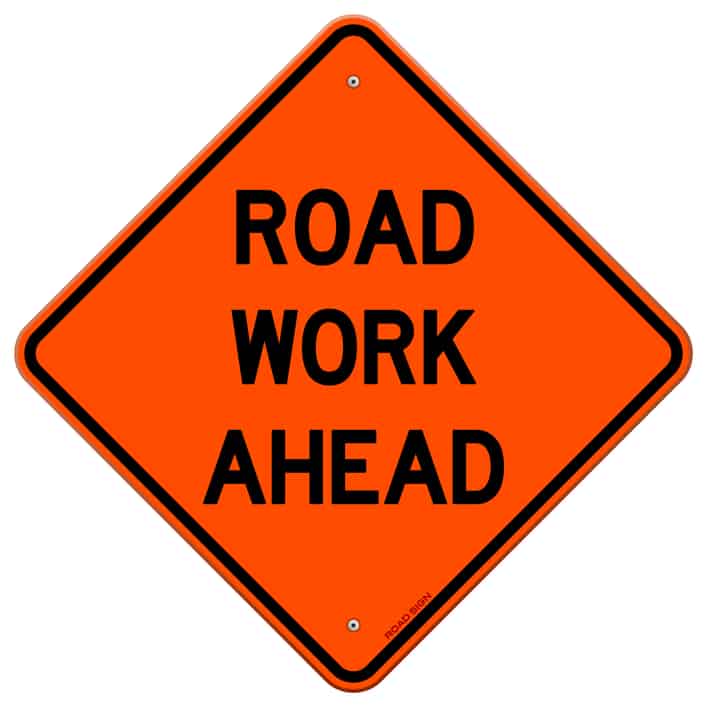What Every Driver Needs to Know About Work Zone Accidents
A careless moment behind the wheel is all it can take to cause a fatal work zone accident—and that’s a toll no one should have to pay.
 Tragically, however, that toll spikes in Spring when orange cones, flashing lights, and more work zones return to the roads.
Tragically, however, that toll spikes in Spring when orange cones, flashing lights, and more work zones return to the roads.
That’s why safety authorities have designated April for National Work Zone Awareness—and why now may be an ideal time for all motorists to get up to speed with:
To explore more issues impacting motorists, check out Why Texas Ranks 17th for the Worst Roads, What Undocumented Motorists Should Do After a Wreck, and Deadly Wrecks Dropped in 2024.
Work Zone Driving Dangers
Several factors make work zones hotbeds for traffic crashes, and they’re all associated with more unpredictability and disruptions to the normal traffic patterns. These factors can include (and are not limited to):
- Narrowed lanes: Reduced space can make maneuvering more difficult. It can also mean that overcorrections, slight slip-ups, and even fractions of movements can cause sideswipes and other crashes.
- Sudden stops: Unexpected halts are more likely to occur in highway work zones with congestion and quickly evolving conditions. This can increase the risk of rear-end collisions and chain-reaction crashes.
- Motorists: If drivers aren’t focused, ready to respond, or sober, the chances of accident-causing mistakes behind the wheel can spike.
- Workers on foot: Highway workers can be steps away from speeding traffic, putting them at constant risk of injury with every passing vehicle.
- Moving machinery: Heavy equipment in highway work zones can operate in tight spaces with limited visibility while moving materials and workers around. If anything goes wrong—like materials falling or operators failing to properly control the equipment—the risks of collisions can skyrocket.
The sum of these (and other) work zone dangers can create dynamic conditions and unexpected challenges for motorists. When these drivers are inexperienced, impaired, or distracted, work zone dangers can become deadly.
Work Zone Accident Statistics

- On average, at least two people die every day in work zone accidents.
- Roughly 59% of fatal work zone crashes occur in areas of new roadway construction. Less than 6% happen in roadway maintenance zones. Only ~1% take place in utility zones.
- In fatal work zone accidents, the drivers of passenger vehicles are most likely to sustain fatal injuries. Pedestrians, who usually comprise workers in highway work zones, are the second most likely parties to suffer deadly trauma.
- Since 2010, there has been a ~52% surge in fatal work zone accidents.
- Since 2021, deadly work zone accidents have decreased ~7%.
Notably, Texas leads the nation in fatal work zone wrecks, with deaths from these accidents up ~22% since 2020.
6 Tips for Driving Safely in Work Zones

To safely travel by and through work zones:
- Stay alert: Avoid all distractions when driving through work zones (and, really, any time you’re behind the wheel). Put down mobile devices and focus on the road.
- Obey speed limits: Slow down and adhere to the reduced speed limits posted around work zones. These are intended to protect workers and the motoring public.
- Follow signage: Look for, read, and comply with work zone signs and any flaggers directing traffic. If you notice lane closures ahead, don’t wait until the last minute to get over and be courteous in allowing others to merge.
- Maintain safe distances: Never tailgate when driving through work zones. Keep a safe following distance to allow for sudden stops.
- Be patient: Expect delays and stay calm. Letting frustration or road rage take over won’t help you get through a work zone faster (and it could be a safety risk).
- Plan ahead: If time is limited to get from Point A to Point B, look up any potential work zones along your route before you hit the road. This can give you time to reroute your journey, if needed, or allot more time, so you can avoid rushing.
These tips can go a long way toward minimizing the risk of work zone accidents, injuries, and deaths. They cannot help you recover, however, after a work zone wreck happens. In these cases, finding out more about your legal options can help you take the right steps to seek justice.

